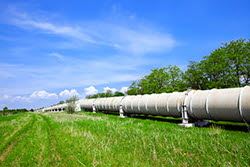Iron residing in rock masses has a rather dull feature when it comes to a practical application - the metal is bound to oxygen. It is not iron we hold in our hands but iron ore that we're dealing with. Iron ore will not provide you with sharp spearheads, nor hard-hitting ax blades.
A marriage in dissolution.
In a conventional blast furnace the oxygen is removed by adding coke in the large blast furnaces used to melt the iron ore. During melting oxygen molecules are released and the natural alliance or "marriage" if you like between the iron and oxygen dissolves. Without a new suitor present, the oxygen will quickly find their way back to the iron molecules, and this is where the coke plays an important part. The carbon in the coke forms a new alliance with the oxygen. Unfortunately, the new relationship results in large amounts of CO2 emissions -which we do not want.
Many years ago some clever people found a much kinder suitor in iron production, CO2 emissions can be limited considerably by introducing the iron to a mixture of carbon monoxide and hydrogen called "synthesis gas" instead. This makes it possible to free the metal from the oxygen molecules without having to go through the big blast furnaces. This makes the process far less energy intensive. Synthesis gas can be produced in different ways, natural gas being a possible source. There are visions of establishing ironworks based on Swedish iron ore and natural gas from Norway in Tjeldbergodden, North Møre, in Norway.
(From the left: Cold Direct Reduced Iron, Hot Briquetted Iron, Hot Direct Reduced Iron)
Yes, there is a focus on natural gas in Norway!
SINTEF Materials and Chemistry has several competence building projects to both establish and develop new technologies and processes for metal extraction. The institute does not only do research in the field on iron, but also metals such as rare earths, Al, Si, Ti and ferroalloys. Although natural gas has shown great potential as a reducing agent in the laboratory, the processes have proven to be difficult to control in practice. A more fundamental knowledge is required - a view that NFR shares. Last year, a total of 49 million NOK was given to projects with natural gas as their main theme by the GASSMAKS program. Metallurgical application of natural gas is considered to be particularly promising field.
As an extension of the internal SINTEF focus NatGasMetal, with project leader Halvor Dalaker, SINTEF got their share of the pot with the spin-off project "Kinetics and Selectivity of Reactions during Oxide Reduction overusing natural gas" which was one of the projects that drew the longest straw. There projects hope to answer some of the more fundamental questions.

